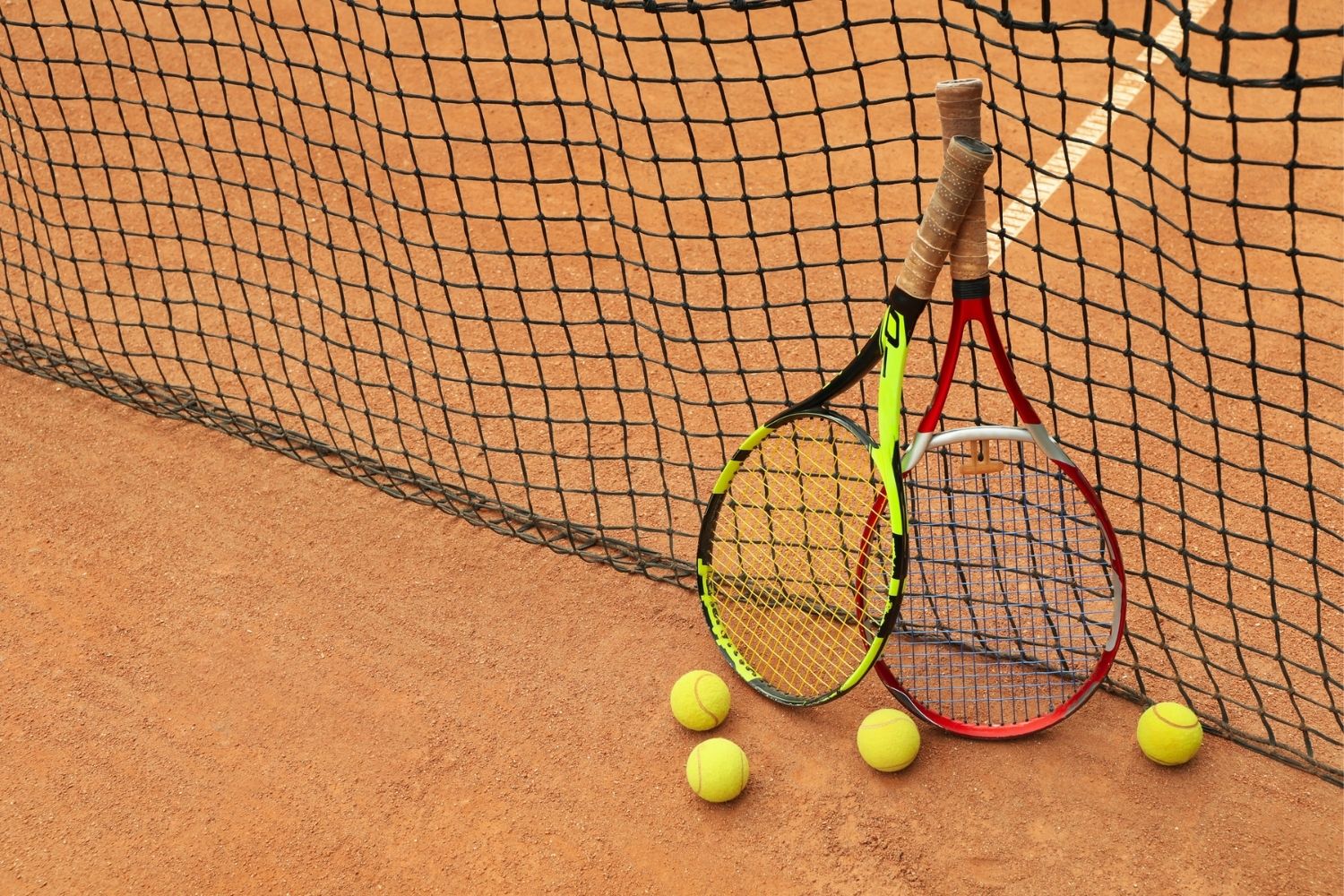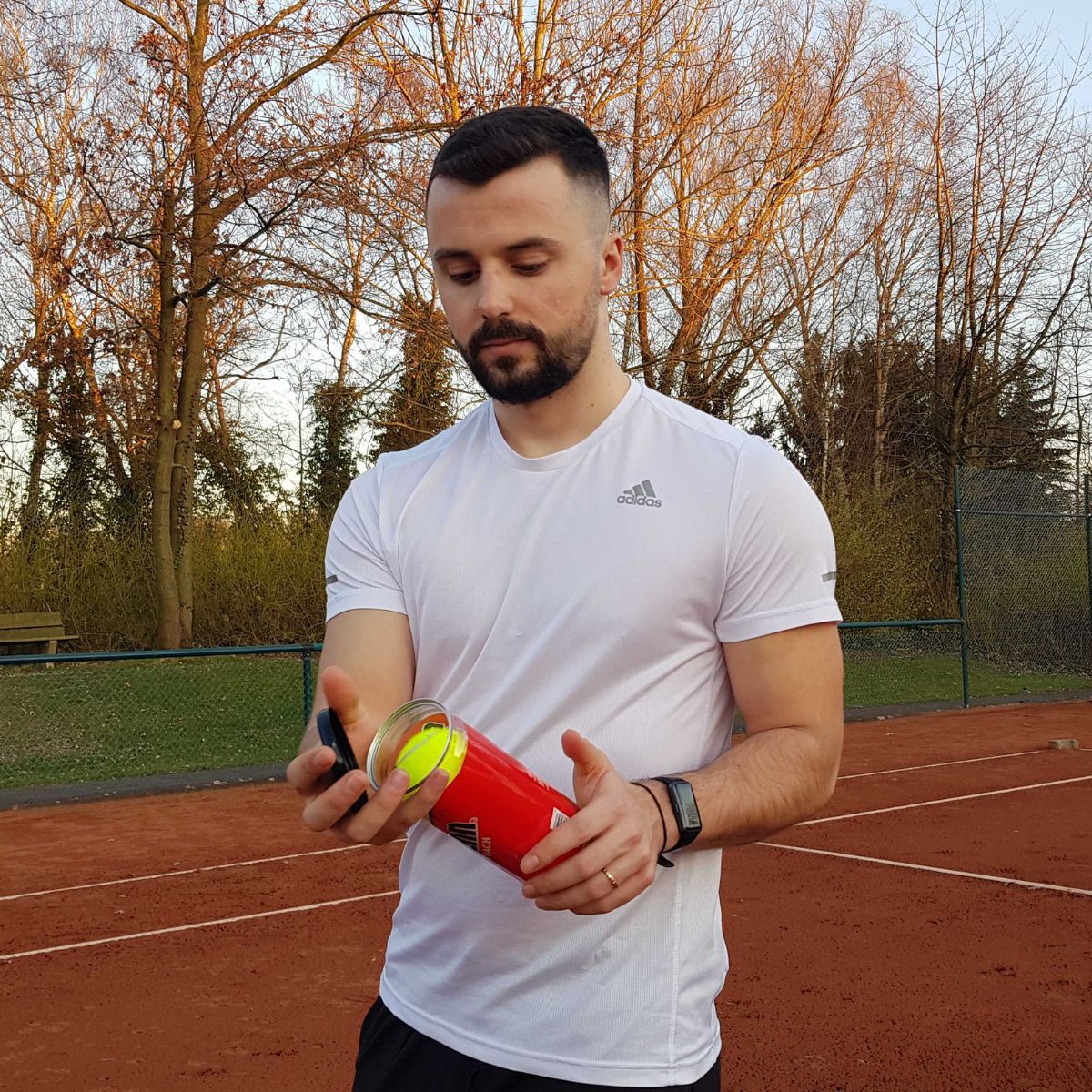- Different types of tennis rackets are available to purchase, each with its own benefits depending on the user’s skill level and desired outcome.
- Power rackets are a great choice for beginners and recreational players who aim to learn the game and improve their skills. These rackets offer high levels of power with little to no effort.
- Control rackets are mostly suitable for highly advanced and professional athletes. They give the player a lot of stability and control over the ball but can be difficult to maneuver.
- Tweener Rackets offer a perfect blend of power and control, making them adaptable for intermediate-level athletes but also beginner friendly.
Buying a tennis racket might be more complicated than it seems. There are many factors to consider when choosing a tennis racket, such as racket type, materials, performance, main features, skill levels, etc.
All of these will impact how you connect with the racket. You want it to feel like an extension of your arm, not a heavy burden to carry around the court. The right racket will help you achieve better results.
If you are a beginner, finding the best tennis racket might be an overwhelming process, and honestly, no one would blame you if you feel like giving up. But worry no more; I am here to help.
This article will find all of what you need to know about different types of tennis rackets, their main characteristics, and materials. Whether you are looking to buy your very first racket or upgrade to a new one, this is the only guide you will ever need.
Power Rackets
Different tennis rackets provide different power levels. As the name suggests, these types of tennis rackets provide high levels of power, which the player can easily access with little to no effort. Power rackets are a great choice for beginners and recreational players who aim to learn the game and improve their skills.
These tennis rackets are easy to maneuver and provide compact shots with a lot of speed and depth. For these reasons, they are often referred to as “improvement rackets.”
Players who don’t have a lot of muscle mass and have a naturally small physique often tend to choose power rackets as well, which help them generate much more strength during their hits.
Common Characteristics of Power Rackets
- Head: Typically, power rackets have an oversized head, starting from 105 inches and bigger. They are known for their “trampoline- effect” when hitting the ball, making them more flexible and forgiving. Since the surface is larger, they have a nice sweetspot too. A bigger head size allows more power and generates a lot of spins.
- Length: Extended length provides more leverage and increases power. That’s why most tennis racket brands produce power rackets with lengths greater than the standard size, starting from 27 to 29 inches.
- Weight: Even though they are larger, power rackets weigh less than other types of tennis rackets due to their light construction. This is a common trait of power rackets, making them adaptable and easy to maneuver in court.
- Stiffness: Usually, power rackets feature stiffer frames. This means the racket doesn’t bend too much when it contacts the ball; in other words, it is not flexible. However, the racket can quickly produce more speed and rebound from the impact.
Pros
- High levels of power
- Lightweight construction
- A lot of topspin and speed
- Large sweetspot
- Beginner-friendly
- Suitable for smaller athletes
Cons
- Lacks stability and control
- Not suitable for advanced players
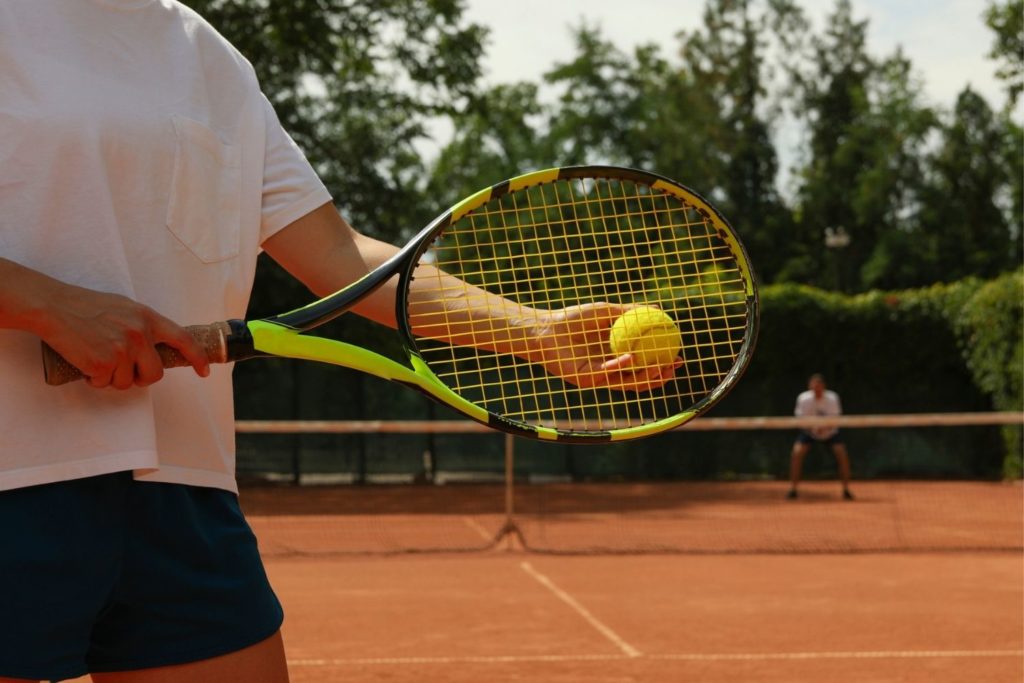
Control Rackets
Control rackets are all about… you guessed it, control. These are also known as the “players’ rackets” and are suitable mostly for highly advanced and professional athletes. These types of tennis rackets give the player a lot of stability and a great sense of control over the ball.
It is very easy to predict where the ball will go with accuracy and precision, but the player should have mastered the skills and techniques.
They are the optimal choice for aggressive players who can hit fast full swing and finish off points. Control rackets are also highly flexible and adaptable on the court. They are the opposite of power rackets, so the players should have the physical ability and preparation to generate enough strength for the shots. Control rackets can absorb the shock pretty well and are comfortable for the arm.
Common Characteristics for Control Rackets
- Head: These types of rackets have small head sizes. The small surface reduces the sweetspot and increases the margin of error. Smaller heads also tend to lack the “trampoline effect” and power levels, which means that the player should be able to generate on its power and speed.
- Length: Typically, control rackets come in a standard length of 27 inches. This helps the racket be versatile, adaptable, and have enough leverage to keep a good rhythm and maneuverability during the shots.
- Weight: Usually, control rackets are quite heavy; they weigh anywhere from 11 to 15 ounces. The added weight has a few important functions, such as; controlled power, which helps the player access different power levels and adjusts strength and speed during the game. The added weight is distributed to prevent twisting, is easier to maneuver, and can switch grip positions fast. Overall, these rackets offer the player an excellent feeling of control and stability. Also, the added weight helps the racket better absorb the shock and energy from the shots, making it more comfortable for the arm. This is especially helpful for aggressive players who like to swing hard.
- Stiffness: Control rackets have flexible frames, which means less power, but also more control, precision, and comfort.
Pros
- High level of control
- Stability
- Precision
- Absorb the shock
- Comfortable for the arm
Cons
- Heavy
- Small sweetspot
- Not beginner-friendly
Tweener Rackets
Tweener rackets are the golden mean between power and control; they offer a perfect blend of both. These rackets are more suitable for intermediate-level athletes but can also be a choice for beginners and recreational players. They are well balanced and perform great in all areas of the court.
These tennis rackets are designed to be lightweight and with a versatile frame. They generate a great amount of topspin and speed. These rackets can generate a good amount of power while still allowing the player to have control over the ball. They have a nice sweetspot and are made of highly durable materials.
Common Characteristics of Tweener Rackets
- Head: usually comes in a mid-size, between 98 inches to 104 inches, to provide both power and control.
- Length: Most brands stick to a standard of 27 inches to provide leverage and maneuverability.
- Weight: These rackets can be light to medium weight, depending on the model. Usually, they can be 9.5 ounces to 11 ounces, with a well-distributed weight.
- Stiffness: Also rate into the mid-range, starting anywhere from 61 to 70 RA. This aims to provide a mixture of power and control.
Pros
- Great blend of power and control
- Versatile frame
- Lots of topspin and speed
- Lightweight and durable
- Nice sweetspot
Cons
- Not suitable for advanced players
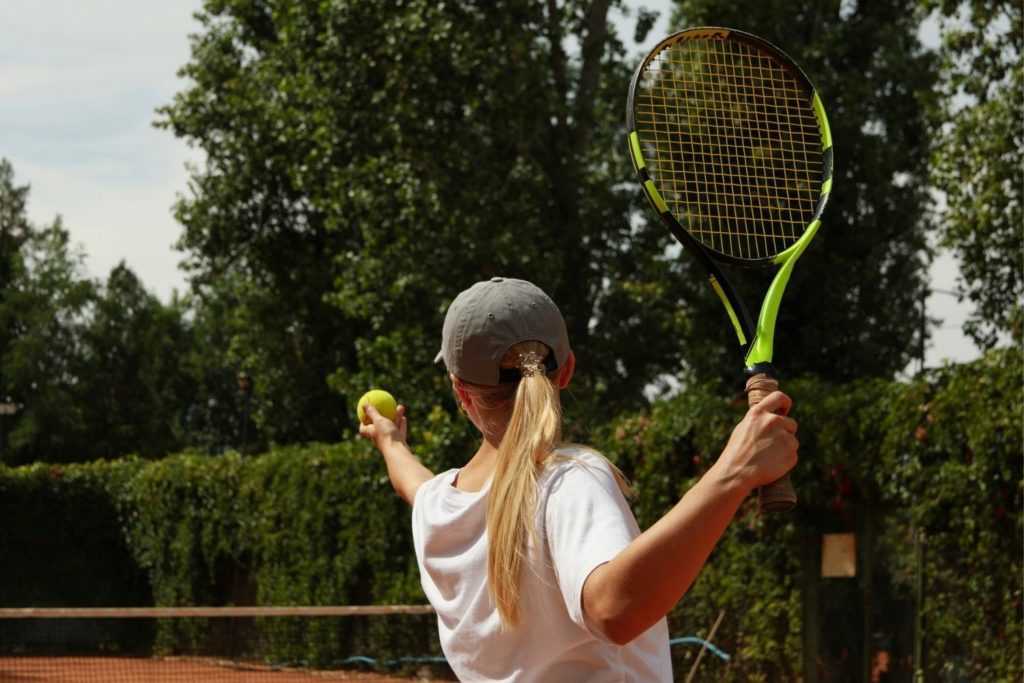
Modern Player’s Rackets
Different tennis racket brands are using new technology to update and improve their rackets, as tennis is becoming more competitive than ever. We might as well be at the beginning of a new era, as modern players’ rackets are growing in popularity. Even professional athletes are starting to use them more often.
They aren’t different in design, but they have better mechanics, can generate more spin, and keep a fast pace. Modern players’ rackets are lighter in weight than a standard pro-racket, have a bigger head size, and produce more power. They also feature a nice sweetspot. Their models are continuously evolving, so the future is quite promising.
Common Characteristics of Modern Player’s Rackets
- Head: Often come in midsize to increase power and spin. They are perfect for aggressive players who aim for difficult angles during their shots.
- Length: Most modern players’ rackets have a 27 inches length, sticking to the standard.
- Weight: They still are on the heavy side, even though they are lighter than most pro-athletes rackets.
- Stiffness: Still pretty close to pro-rackets, but modern players’ rackets are stiffer to generate more power levels.
Pros
- Heavy topspin
- Powerful swings
- Nice sweetspots
- Updated features
- Ideal for difficult shot angles.
Cons
- Not easy to maneuver
- Not beginner-friendly
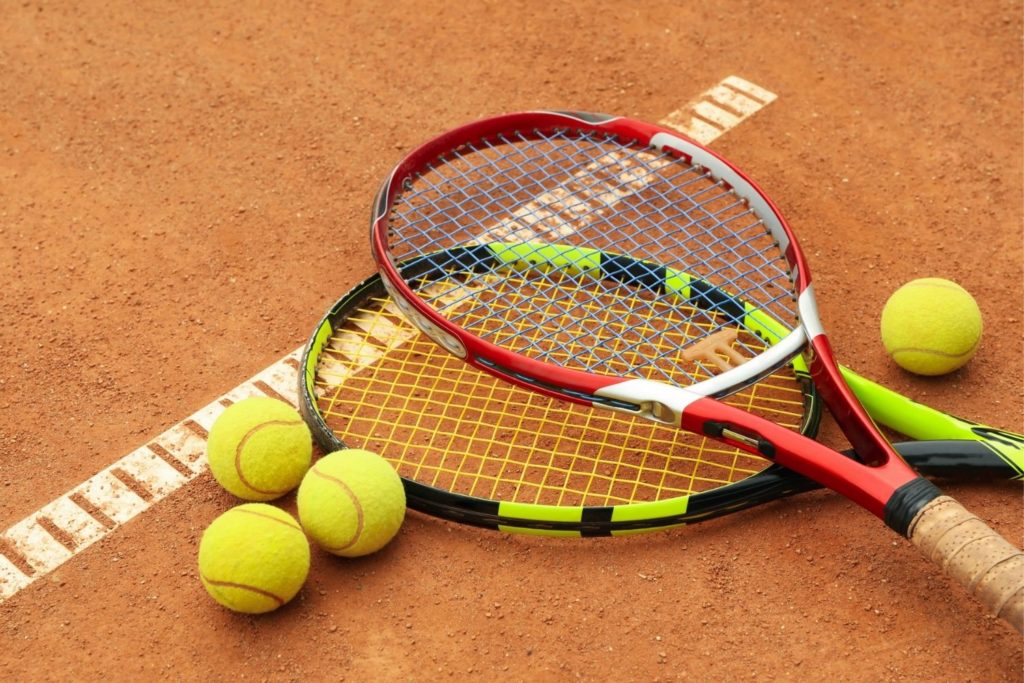
Different Types of Tennis Rackets Based on Material
Tennis rackets have come a long way since the first professional matches, where the earliest athletes used wooden rackets. But as the game became more and more competitive, the rackets started changing.
Different brands started looking for other materials to make their products better, lighter, and more powerful. New racket models started launching one after another, changing once and for all the game. It was a small revolution, as no other sport has made such drastic changes to the gear used or the competitive level.
The new materials affected the performance of the rackets and the players, allowing them to be more aggressive in the field, with more powerful shots, full swings, hitting difficult angles, and new, improved strategies.
Listed below are all the materials ever used in making the tennis rackets, and in case you were wondering, it also includes the material used nowadays.
- Wood: The first racket was made of wood material, first solid wood, and later they started using laminated wood. During these times, they used catgut to make the strings. These rackets were heavy and limited to a standard size only. The frame should be strong enough to hold the string and offer enough stiffness to hit the ball. With time, these rackets got replaced with other materials to make rackets more convenient, versatile, and satisfy the needs of all types of players.
- Metal: Rackets made of metal materials started getting popular around 1967 when Wilson launched their famous T200 model. Their sale campaign promised that this racket delivered better performance and increased power in each swing. It soon became the go-to of most players, who loved the new changes in material, and found this racket easy and fun to play with. Safe to say, it was a revolution as wooden varieties were left behind, as other brands joined the hype too. The metal rackets had clear advantages compared with the wooden ones; however, it was still heavy to play with and not easy to maneuver.
- Composite: In the ‘80s, Wilson changed the game again when they launched a new line of composite rackets made of different materials such as fiberglass, boron, and kevlar. It was yet again a drastic shift, which had immediate success and a massive wave of popularity. Composite rackets were lighter, easy to maneuver, generated more topspin, and offered full swings and powerful shots. These rackets were lighter and much more comfortable for the arm. The metal racket soon was replaced with composite ones, as players opted out for more advantages.
- Graphite: Graphite is one of the most popular options for manufacturers nowadays. Graphite is often referred to as the mineral of extremes and is an occurring form of crystalline carbon. It’s incredibly strong yet soft, lightweight, and heat-resistant. Graphite rackets are quite light in weight and serve powerful shots with high impact.
- Titanium: Titanium is probably the most used material in the manufacturing process since the brands and players prefer it better. Compared to graphite rackets, titanium ones are lighter in weight and not as stiff. These tennis rackets are very well-balanced and easier to maneuver. Usually, they are the most expensive ones too.
What Type of Tennis Rackets Should You Buy?
Now that you know all about the different types of tennis rackets and their materials, you should consider a last important factor: your skill -level. For this, you should be completely honest with yourself and evaluate where you stand in terms of the techniques you have mastered and your physical abilities.
Trust me; this process will be extremely helpful in finding the right fit, which will make the game fun and help you improve. Listed below are the type of rackets you should go for, depending on your level.
Beginner
As a beginner, the chances are that you have never played tennis before, or are fresh new at the court, still learning the basics. In this case, you need a power or a tweener racket, which will help you get started.
Intermediate
If you have already learned all the game basics, mastered some techniques, and feel ready for an upgrade, it’s better to choose a twinner tennis racket for intermediate players. Please, don’t grow impatient and stay away from power or modern racket, at least for some more time.
As an intermediate player, there is still plenty of space for improvement, and you need to yet to fully mature. It is also for your safety because opting out for pro-rackets before time can lead to possible injuries.
Advanced
Advanced players usually prefer control rackets with adjusted features according to their needs and game strategy. These players choose their tennis racket way before they even reach this level, as they understand the racket’s impact on their performance and results.
Conclusion
There you have it! This is all the core information you should know about different types of tennis rackets, their difference, and how different materials impact their performance. Evaluating your skill level will also help you make the right choice and narrow down your options.
It’s normal to feel overwhelmed if you are a beginner, and that’s okay. You can always turn back to this guide until you feel confident enough to pick out your tennis racket.
